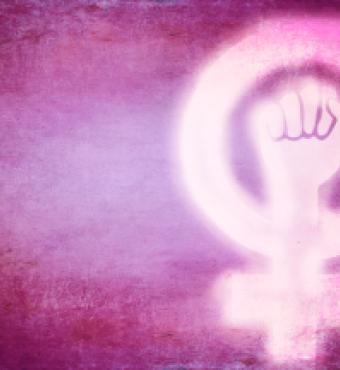Editor’s note: This is an excerpt from a new book, Prey: Immigration, Islam, and the Erosion of Women’s Rights, by Ayaan Hirsi Ali. Click here to buy a copy.
We in the West are used to seeing women everywhere around us. We see them as colleagues in the office, sitting next to us on the bus, as patrons in restaurants, jogging on the streets, and working in shops. We are also seeing more women than ever in leadership positions as prime ministers, politicians, chancellors, directors, and bosses. Women born in the West in the 1990s onward take this as a given. They do not consider that walking to school or sitting in a cafe is a triumph of liberalism. But in some parts of Western cities and towns these days, you may notice something strange: there are simply no women around—or very few.
Walking in certain neighborhoods in Brussels, London, Paris, or Stockholm, you suddenly notice that only men are visible. The shop assistants, waiters, and patrons in cafes are all men. In parks nearby, it is only men and boys playing soccer. In the communal areas of apartment buildings, it is men talking, laughing, and smoking. On the continent to which millions of tourists travel each year to see the female body as an object of art or wearing the latest fashions, this seems a little strange. What happened to the women? Why are they no longer sitting at sidewalk cafes or chatting in the streets?
The answer is that some women have removed themselves from those neighborhoods, others have been hounded out, and still others are at home, out of sight. As more women erase themselves from public places in such neighborhoods, the few who remain are exposed, drawing the attention of men inhabiting the area. There is no formal segregation, but a feeling of discomfort and vulnerability is enough to make any woman walking alone shudder and think, “I won’t come this way again.”
Women in such areas are harassed out of the public square. Some men call out to them, “Hey, baby, give me your number,” or “Nice ass,” or “What are you doing here?” Whatever their age or appearance, if they are female and especially if they are alone, they get the same treatment. A persistent harasser might follow a woman up the street, touch her, and block her path. If a woman looks vulnerable, some men will go further: they pick her as a target, they encircle and intimidate her, groping her, pulling at her clothes, and occasionally doing worse.
Such incidents are becoming more common. Women and girls across Europe speak of being harassed walking to the shops, at school and university, in swimming pools, in nightclub bathrooms, in parks, at festivals, in parking lots. They say that local streets and public places are no longer safe. And their assailants have no shame about perpetrating their harassment in public.
Finding robust data about this phenomenon is notoriously difficult. My research assistants and I have spent two years combing through the available sources—crime statistics, court reports, police reports, government accounts, academic sources—and none of them offers a complete picture. We know that only a small fraction of women report being sexually assaulted after they have suffered it and even fewer report sexual harassment, which most women shrug off as being part of the course of their daily lives. Frustratingly, many of the relevant experiences of ordinary women rarely make it into the public domain, beyond isolated posts on social media.
In speaking to European women, however, I have come to see that the problem goes much deeper and wider than the stories that appear in the news. Their testimony has convinced me that we are living through a quiet but significant erosion of women’s rights in some neighborhoods in Europe. If this trend continues, it will affect more and more places in Europe; more and more streets will become unsafe for women. For now, these neighborhoods have two things in common: low income and a large number of immigrants from Muslim-majority countries.
A Change for Women in Europe
As a Somali arriving in the Netherlands in 1992, I was shocked to see young women alone on public transport and in bars and restaurants. I had grown up knowing that to step outside the house without covering my head and body, or without a male relative to escort me, would make me a target for harassment and assault. But in Holland, women freely walked the streets at night without men to chaperone them, their hair uncovered, wearing whatever they pleased.
Of course, there were exceptions. There were assaults, rapes, and occasionally murders of women, even in Holland. But those cases were so exceptional that they made national news for weeks. As I acclimated to life in a Western city, I learned that the position of women there was radically different from what it was in the world I had come from. Today, two decades later, that can no longer be said with the same confidence. A growing number of European women are questioning their safety. Cases of rape, assault, groping, and sexual harassment in public places seem to have become more numerous.
It is no secret—though it is considered impolite or politically incorrect to point it out—that the perpetrators are disproportionately young immigrant men from the Middle East, South Asia, and various parts of Africa. Often operating in groups, they are making it increasingly unsafe for women to venture into a growing number of neighborhoods in European cities.
It is a truism to say women have always suffered the threat of sexual violence. But for at least the last four decades in Europe, it was the exception, not the rule. In the 1990s, I assumed that developing countries would gradually become more like Europe. Back then, few people would have predicted that parts of Europe would begin to take on the attitudes and beliefs of cultures that explicitly downgrade women’s rights. But I believe that is what is happening. We are witnessing a challenge to the rights that European women once took for granted. I do not think it is coincidental that this challenge has followed a significant increase in immigration.
Approximately three million people have arrived illegally in Europe since 2009, the majority of whom have applied for asylum. Roughly half arrived in 2015. Two-thirds of the newcomers were male. Eighty percent of asylum applicants were under the age of thirty-five. In the most recent years, a third were (or claimed to be) under eighteen.
The overwhelming majority of these young men have arrived from countries where women are not regarded as equals or near equals, as they are in Europe. In some of the countries of origin, for example, boys and girls are separated in the household from the age of seven. They are discouraged from mixing, and sex education is taboo. They come from a context that does not give equal rights to women and discourages them from working, remaining single, or following their own aspirations.
Of course, this is not an entirely new phenomenon. Migrants from the Muslim world have been settling in western Europe since the early 1960s. However, those earlier periods of settlement were rarely associated in the public mind with violence against women. That was because few Europeans noticed the way women and girls were treated inside the immigrant families. People like me tried to shed light on the honor violence, female genital mutilation, and forced marriage to which many girls and women were subjected. But it was assumed that within a generation or two those cultural behaviors would go away as the liberties enjoyed by Western women spread to migrant communities. For too many women within those communities, that simply has not happened.
This book came about because I was curious to investigate why women were retreating from the public space in some neighborhoods. My hunch was that women were ceding their access to public places in a trade-off for personal safety. That is what life is like for many women in Muslim-majority countries. It is also how many women in immigrant communities have continued to live in the West for the last five decades: they are confined to their homes for a significant part of their lives, and their outside movements are policed by a network of family and community members. It seemed logical to ask how far increasing numbers of men from societies where this dynamic between men and women exists might be imposing their norms on other women in their proximity.
In the years leading up to Europe’s migrant crisis in 2015, I had noticed occasional reports of sexual assault in the media. Each instance had been reported as an isolated, individual case. At first glance, they did not add up to a bigger picture. Generally, the assault involved a woman attacked by a stranger on her way home from a night out. It later transpired in some cases that the perpetrator was an immigrant, or maybe he had been born in Europe and lived in a poorly integrated immigrant community. But the cases did not seem numerous enough to constitute a pattern.
Beginning in late 2015, however, this changed. Reports of such sexual assaults, as well as rapes and cases of harassment, snowballed. As I looked further into the phenomenon, it became apparent to me that the escalation in the number of sex crimes was occurring in the western European countries that had opened their borders to unprecedented numbers of migrants and asylum seekers from highly patriarchal, predominantly Muslim societies. In 2015 alone, close to two million people, mainly men, arrived in western Europe from Syria, Afghanistan, Iraq, Pakistan, Nigeria, and other countries with large Muslim populations. However, the language differences among the various European societies and the parochialism of their media reporting meant that people in countries as geographically close as Sweden, Germany, France, and Austria did not appreciate that what was being reported by women in their country was also happening elsewhere.
It is important to state unambiguously that there is no racial component to my argument. A certain proportion of men of all ethnicities will rape and harass women. According to the World Health Organization, 35 percent of women worldwide “have experienced either physical and/or sexual intimate partner violence or non-partner sexual violence.” But the rates are markedly lower in Europe than in other parts of the world. In some societies, men are brought up to respect women’s physical autonomy, whereas in others predatory behavior is not proscribed with the same severity.
Before You Object . . .
Let me state this up front: being Muslim, or being an immigrant from the Muslim world, does not make you a threat to women. Rape, sexual assault, and sexual harassment seem to be universal. In numerous periods of upheaval, large-scale population movements have been associated with increases in sexual violence against women. It would be easy to fill an entire book with such gruesome episodes, and it would quickly become apparent that they occur in a wide variety of geographical and cultural settings. Indeed, as I have already said, nothing that occurred after 2015 can remotely compare with the horrific campaign of rape waged against German women by the Red Army at the end of World War II.
The point of this book is not to demonize migrant men from the Muslim world. Rather, it is to better understand the nature and significance of the sexual violence that has occurred in so many parts of Europe in the recent past. As I was researching for this book, the #MeToo movement shone a light on sexual abuse and exploitation in the upper echelons of North America. I found myself wondering why an equally bright light was not being shone on the often more serious crimes against women in lower-income neighborhoods in Europe.
Time and again in my career I have come across authorities and commentators—including self-described feminists—who are prepared to look the other way when it comes to the harassment and abuse of immigrant women at the hands of their own men. It now looks as if the same people are applying the same double standard when it comes to the harassment and abuse of native-born women. In some cases, I have even heard European victims of sexual assault make excuses for their attackers. Afraid of being called racist, these women strike an apologetic tone on behalf of those who assaulted them, some even apologizing for bringing them to justice.
Authorities understate the incidence of assaults and harassment of women. In the interest of political expediency, politicians play down the threat and encourage the police to do the same. Excuses are made for criminal behavior. Judges hand out light sentences to perpetrators. And the media self-censor their reporting—all in order, it is said, to avoid stoking racial and religious tensions or providing ammunition for right-wing populists.
This conspiracy of silence, or at least of understatement, has had predictable beneficiaries: none other than the right-wing populists such as the National Front (now National Rally) in France, the Party for Freedom in the Netherlands, the Alternative für Deutschland in Germany, and all the other parties whose core policy pledge is to restrict immigration, and particularly Muslim immigration.
I was once an asylum seeker. I am an immigrant twice over, first to the Netherlands, then to the United States. Fleeing to Holland helped me avoid a forced marriage and gave me opportunities I would never have enjoyed had I remained in the Somali society into which I was born. So the last thing I want to see is more obstacles put in the way of those who seek to escape religious oppression, civil war, and economic collapse and to make better lives for themselves, taking advantage of the freedoms of the West. I am writing this book not to help the proponents of closed borders but to persuade liberal Europeans that denial is a self-defeating strategy. If I can also persuade some populists to give integration a chance, so much the better.
Many authors have written about the clash of cultures between Islam and the West. They look at economics, demography, language, religion, values, and geopolitics. Some mention women’s rights as an example. But I believe women deserve to be the central focus of discussion. For nothing else so clearly distinguishes Western societies from Muslim societies today than the different ways they treat women. In this book I therefore concentrate on how women’s rights are being negatively affected by immigration from Muslim societies, what we can expect in the future if things continue as they are, and what we might do differently to avoid a dangerous backlash.
The very idea of women being equal to men is a historical anomaly. It has appeared only in the West and only very recently. (The propaganda claims about sexual equality in communist regimes belied a reality that was quite different.) If we zoom out and consider the whole planet, we see that it is still only a fraction of women who have the wonderful rights and liberties that have been achieved in the West. But these rights are fragile and are at risk of being eroded by men who view independent women—women who enjoy the same rights as men—as prey.
















